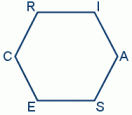 Two ways of defining your strengths are looking at what you do well and what you love doing. If you love doing something, chances are you are or will become fairly proficient at it. So, there is usually a connection between both factors.
Two ways of defining your strengths are looking at what you do well and what you love doing. If you love doing something, chances are you are or will become fairly proficient at it. So, there is usually a connection between both factors.
Use the Skills Sheet and Skills Table to define your best skills. Use the SWOT analysis to define not only your best skills (strengths), but also your weaknesses, opportunities, and threats to get a fuller picture of what’s possible for you at the current time.
* * * * *
Next, use Holland Codes to see how these skills can be used in the workplace.
Psychologist John Holland believed “the choice of a vocation is an expression of personality”. His “Holland Codes”—six groupings of types of work skills—are used by the U.S. Department of Labor for classifying jobs. All people usually have some interest in all the areas, but just the top two or three are used in occupational guidance.
The model used to demonstrate the Holland Codes is a hexagon. The areas next to each other are more closely related.
The six groupings are as follows:
▪ Realistic—practical, physical, hands-on, tool-oriented
▪ Investigative—analytical, intellectual, scientific, explorative
▪ Artistic—creative, original, independent, chaotic
▪ Social—cooperative, supporting, helping, healing/nurturing
▪ Enterprising—competitive, leading, persuading
▪ Conventional—detail-oriented, organizing, clerical
How do your strengths fit into the hexagon? Are they in the same category/categories, similar/touching categories, or on opposite sides of the hexagon?
Related articles
- Visual Thinking Strategies for Career Coaching Presented by the Career Café: Expanding the Possibilities (ctecentral.wordpress.com)
